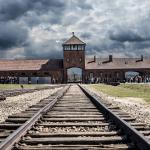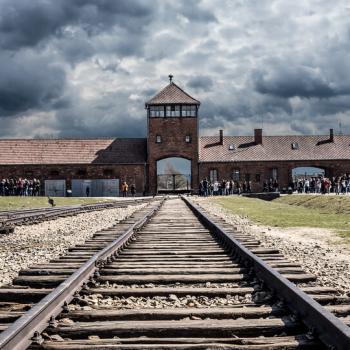
Methodists have reached a crossroads in 2023, as many conservative churches have left the United Methodist Church (UMC) to create a new, more conservative denomination called the Global Methodist Church. But this isn’t the only time the church has split.
Keep in mind that the current divide affects millions of people, as the United Methodist denomination has 12 million members worldwide and is the second largest denomination in the U.S. Also keep in mind that Methodists have a history of disagreeing about important issues.
Our denominational ancestors left the Church of England to establish what became known as the Methodist Church in the late 18th century. And the fledgling church experienced a serious parting of ways over slavery in the 19th century.
Before we look at the current split, let’s look at previous divisions within the Methodist movement.
Early Divisions
Divisions within churches aren’t new. Remember Martin Luther and the Protestant Revolution? The Lutheran Church came from those beginnings. Then, there was John Calvin and Calvinism, which birthed Congregational, Reformed and Presbyterian churches.
Somewhere in the mix, King Henry VIII split with the Catholic Church to form the Church of England. Baptist churches came into being thanks to English speakers in Holland who wanted to read and interpret the Bible for themselves. (However, Baptists deny their movement came from reformers who left the Catholic Church.)
The list of splits and arguments go on.
Born of Revolution
The Methodist Episcopal Church was established in 1784, though the father of Methodism, John Wesley, considered himself an Anglican throughout his life, according to the United Methodist Church (UMC).
The movement admittedly traces its history through the Anglican Church back to Catholicism.
While Wesley’s movement was loosely organized with itinerant preachers in America. Wesley expected those preachers to remain part of the Anglican Church, as they weren’t ordained and couldn’t administer sacraments.
Methodists reached a crossroads when the Treaty of Paris ended the American Revolution in 1783. At that point, American Methodists officially broke all ties with the Church of England.
Thus, the Methodist Church was born in revolution.
Born of Civil War
The first split within the new church came in 1828, when some Methodist Episcopal churches broke away to form the Methodist Protestant Church, according to the UMC.
“They objected to the episcopal hierarchy which gave too much power to bishops and a centralized institution. They retained the Wesleyan doctrine and worship but adopted a congregational style of governance giving more power to local congregations.”
Sixteen years later Methodists reached a crossroads over slavery. Southern churches formed the Methodist Episcopal Church South in order to continue their support of slavery and preach white superiority over blacks.
They left behind a Methodist tradition in the North that strongly opposed slavery. In fact, Methodists played an important role in abolishing slavery in England in the early 19th century. Needless to say, northern Methodists were passionate abolitionists in America.
North-South divisions “persisted until 1939 when the Methodist Episcopal Church, the Methodist Episcopal Church South and the Methodist Protestant Church merged to form the Methodist Church,” the UMC explains.
However, the agreement to merge included a provision that separated black Methodist churches into what was called the Central Jurisdiction.
The impact of the North-South split in the Methodist church was brought home to me when I moved to a new town several years ago and joined its largest Methodist church.
I learned that my new church was formed when the town’s Methodist-North church joined with the local Methodist-South church in the late 1940s. Until their merger, the two churches were located about a block apart.
Splits & Mergers
Another merger occurred in 1968 when the Methodist Church joined with the Evangelical United Brethren Church to form the United Methodist Church.
The truth is that the UMC has never really been united. We tend to have fierce arguments over social issues such as slavery in the 19th century and the LGBTQ movement in this century. And the latter arguments have given way to the current split.
“Diversity of opinion has been tolerated and even encouraged,” UMC notes. “Methodists have never insisted on a litmus test to define its membership…. United Methodists believe in scripture, yes, but scripture informed by reason, tradition, and Christian experience.
“While slavery and race relations have been defining issues, issues of war and peace, sexuality, role of women, etc., have also divided the church. Yet, Methodists have always seemed to be able to come together for the common good,” the church says.
John Wesley explained the Methodist mindset more than two centuries ago. “Though we cannot think alike, May we not love alike? May we not be of one heart, though we are not of one opinion? Without all doubt, we may.”
Today’s Methodist Divide
My denomination has reached a crossroads again in 2023. This time, the major issue is human sexuality.
“The United Methodist Church has long wanted to hold together both conservative and progressive readings of the Bible and interpretations of Christian doctrine,” NPR notes. “But the many congregations disaffiliating reveals the limits of that desire.”
An estimated 20 percent of conservative Methodist churches have already left the UMC over ongoing disagreements about LGBTQ clergy and same-sex marriage. The UMC says this:
“The Church affirms that all people are of sacred worth and are equally valuable in the sight of God. It is committed to be in ministry with all people.
“The Church ‘implores families and churches not to reject or condemn lesbian and gay members and friends’….Everyone is welcome to worship and actively participate in the life of our churches….”
UMC goes on to say, “The Church deplores acts of hate and violence against people based on sexual orientation or gender identity and believes human rights and civil liberties are due all people, regardless of sexual orientation.”
The Rev. Glen Haworth, pastor of The Fount Church in Fountain Valley, CA, explained the Global Methodist Church’s position in a recent interview with NPR:
“Most recent and probably most prominent is the differences of opinion we have with regard to homosexuality, marriage in general, the sexual ethic. And we believe, as do many Christians, that the Bible is very specific in that teaching.”
He points that the UMC’s “rule book” – the Book of Discipline – clearly states, “Homosexuality is incompatible with Christian teaching.” And he believes that UMC leaders are openly defying this rule.
The UMC voted in 2019 to uphold the ban on LGBTQ clergy and same-sex marriage, but a number of church leaders said they wouldn’t enforce it.
So, where does this leave Methodism today?
“Division is underway. Perhaps it’s for the best as it recognizes the realities that have always existed,” the UMC says. “It will be interesting to see how the new denomination deals with differences in the future, differences that will almost certainly arise within the ranks.”
The new Global Methodist Church says, “Our desire is to demonstrate to the world the extravagant love of God in the person of Jesus Christ…. Our vision is to join God in a journey of bringing new life, reconciliation, and the presence of Christ to all people….”
My church hasn’t joined the Global Methodist movement, and I’ve seen no interest in doing so. Our pastor recently said, “We’re staying put,” which is where I want to be.
I believe that God created all humanity, and if we assume that God is infallible – as Christians do – how can we say that he made a mistake in creating gays, etc.?
How would I react to a gay pastor leading my church? I can’t honestly answer that question because I simply don’t know.
We cannot predict the future, but I pray that Methodism survives this latest division, rebounds from the trauma and rises out of the ashes to become a stronger and better Christian tradition.
To learn more about the situation, read “United Methodists Lose 1,800 Churches in Split Over LGBT Stance” on the “Christianity Today” website, here.


















